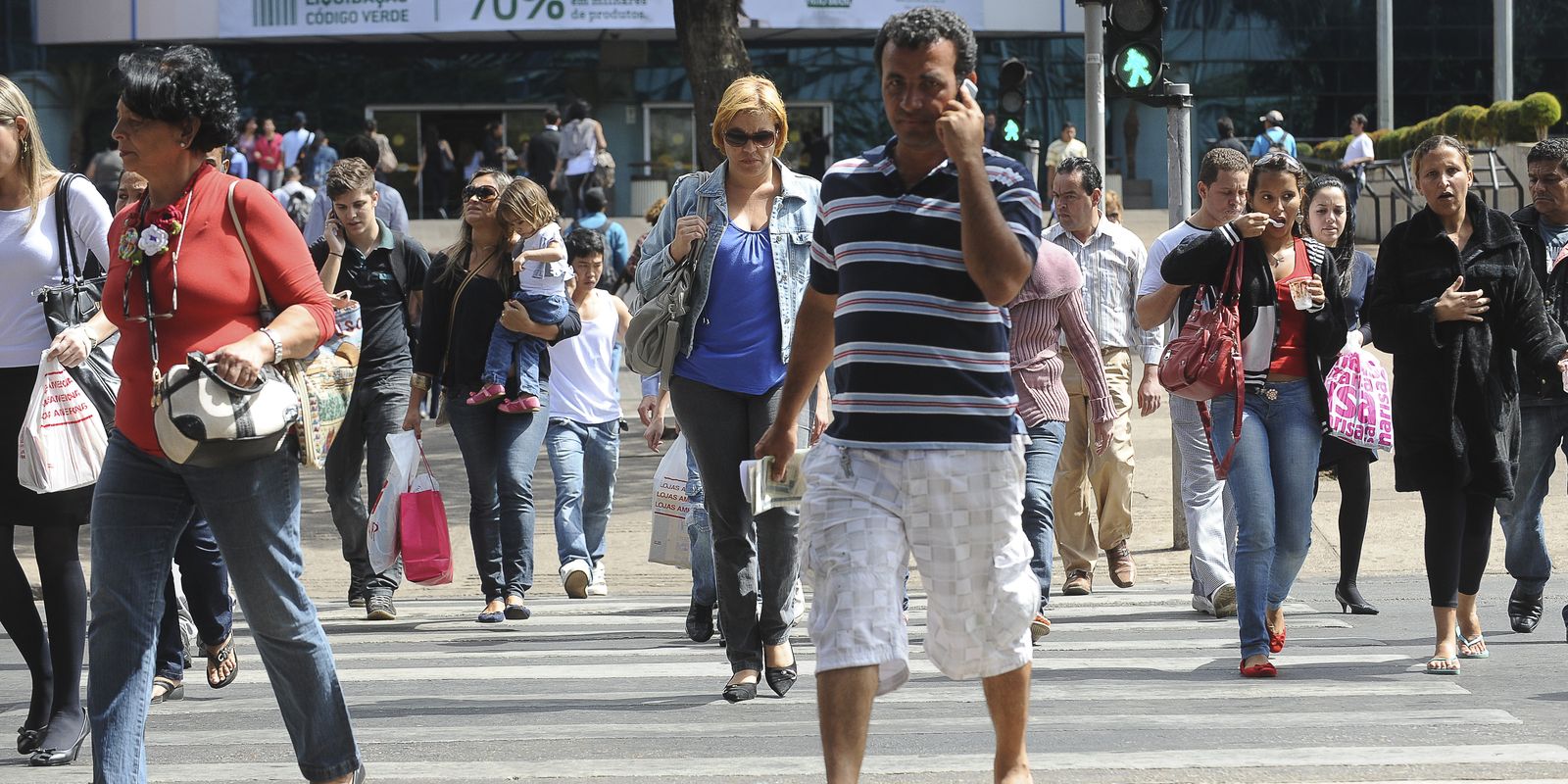The unemployment rate in the quarter ending in June fell to 6.9%, the lowest result for a quarter since the one ending in January 2015, when it also reached 6.9%. Looking only at the three-month period up to June, it is the lowest result ever recorded, equaling 2014. The data is part of the Continuous National Household Sample Survey (Pnad), released this Wednesday (31) by the Brazilian Institute of Geography and Statistics (IBGE).
In the previous three-month period, which ended in March, the unemployment rate was 7.9%. In the second quarter of 2023, the rate was 8%. The figure reached in June is less than half the peak of the IBGE historical series, in March 2021, when the rate reached 14.9%. At the time, it was the height of the COVID-19 pandemic. The series begins in 2012. The lowest result ever recorded is 6.3% in December 2013.
In the quarter ending in June, the number of people seeking work was 7.5 million – the lowest since the quarter ending in February 2015. This represents a 12.5% drop in the quarter. Compared to the same period last year, the reduction was 12.8%.
The employed population broke another record, reaching 101.8 million people. This contingent is 1.6% higher than in the previous quarter and 3% higher than in the same period last year.
Scenario
IBGE’s household survey coordinator, Adriana Beringuy, pointed out that the three activities with an increase in employment were commerce, public administration and information and communication activities.
The researcher explained that the behavior of the employment level is a reflection of the improvement in the general scenario of economic activities and the growth of income and population. According to her, companies and institutions experience this economic upturn and cause more labor to be demanded for the production of goods and services.
“It is a labor market that has been responding satisfactorily to the improvement in the macroeconomic framework, both with growth in the number of employed people and with aspects related to better quality, more formal employment and a trend towards growth in the average income of workers,” he stated.
She adds that the results can no longer be attributed solely to the post-pandemic recovery. “Now, in 2024, we have a labor market that has responses not only to a post-pandemic process, but also to the functioning of economic activity, in a scenario more related to macroeconomic measures, which end up favoring the absorption of workers.”
Formal and informal
The number of employees in the private sector was also the highest ever recorded, 52.2 million, driven by new records for the total number of workers with a formal employment contract (38.4 million) and without a formal employment contract (13.8 million).
“Employment with formal contracts in the private sector is not stopping growing due to the increase in employment without formal contracts. There is a simultaneous expansion of formal and informal employment”, highlights Adriana Beringuy.
“The formal population has been growing at a faster rate than the informal population. Between the first and second quarters, the informal population grew by 1% and the formal population by 2%,” he adds.
The informality rate, which includes employees without a formal contract, employers without a CNPJ and auxiliary family workers, was 38.6% of the total employed, compared to 38.9% in the quarter ending in March and 39.2% in the same quarter of 2023.
The PNAD also shows the highest level ever recorded of workers who contributed to social security. There were around 66.4 million people, a level that accounts for 65.2% of the working population. Despite the record in absolute terms, the proportion of contributors is still below the peak of the series, which was 66.5% in the second quarter of 2020.
Adriana Beringuy explains that this mismatch occurs because, in the process of expanding the number of workers, there is a portion of employed people without a formal employment contract. “This informal employment is usually not associated with social security contributions,” she explained.
The discouraged population, that is, those who have given up looking for work because they think they will not find one, fell to 3.3 million in the quarter ending in June. This represents a reduction of 9.6% in the quarter. It is also the smallest contingent since the quarter ending in June 2016 (3.2 million).
Performance
In the quarter ending in June, the average worker’s income was R$3,214, up 1.8% in the quarter and 5.8% year-on-year. It is also the highest since the three-month period ending in September 2020.
With more people employed and an increase in average income, Brazil had a record income mass in the second quarter of 2024, which reached R$322.6 billion. This is the total amount of money that workers receive to move the economy through consumption and savings.
The IBGE survey assesses the behavior of people aged 14 and over in the labor market and takes into account all forms of employment, including formal or informal employment, temporary employment and self-employment, for example. 211,000 households are visited in all states and the Federal District.
Caged
The IBGE release comes one day after the release of data from the General Registry of Employed and Unemployed Workers (Novo Caged), compiled by the Ministry of Labor and Employment. Unlike the PNAD, Caged only provides data on formal employment.
Brazil closed the month of June with a positive balance of 201,705 jobs, which represents an expansion of 29.5% compared to the same month last year. The result was the result of 2,071,649 admissions and 1,869,944 layoffs.
In the year to date up to June, the balance is 1.3 million vacancies and, in the last 12 months, 1.7 million.
* Article updated at 11:28 am to add information.
















